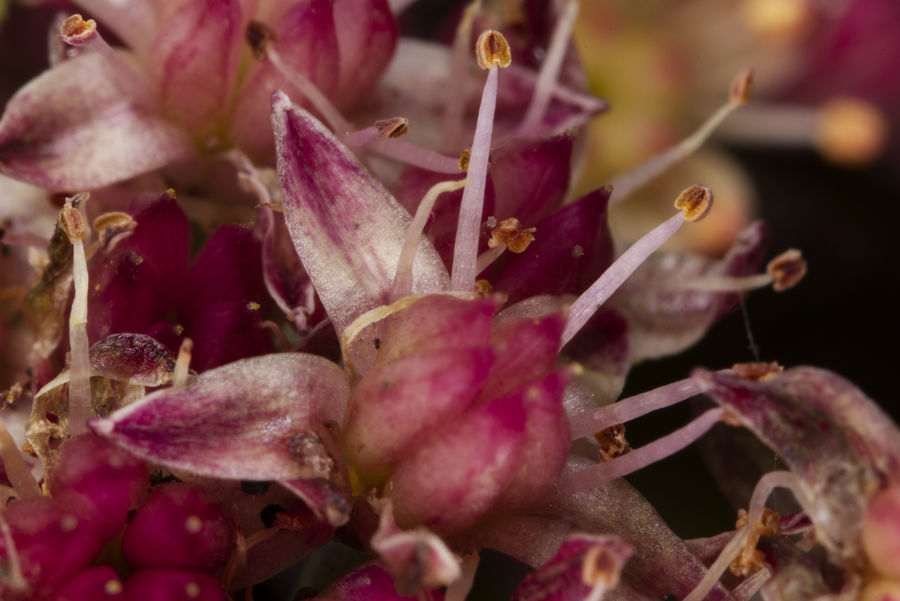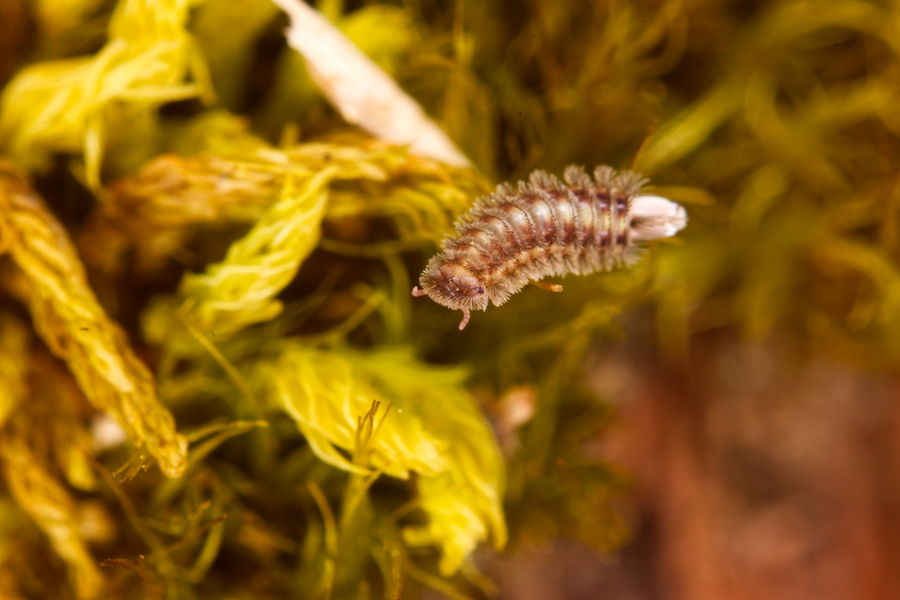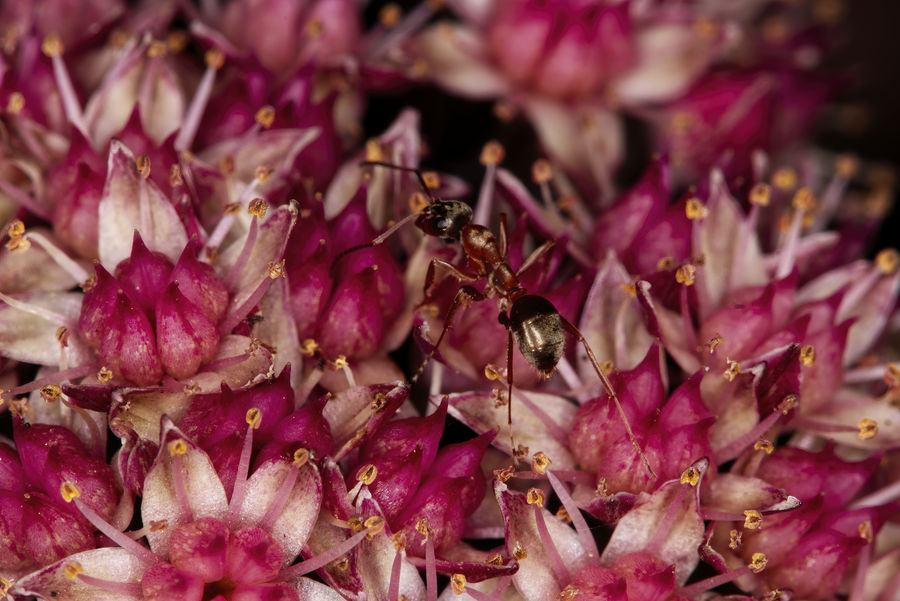Cheap/inexpensive options for Macro photography
Sep 11, 2021 19:41:51 #
Equus
Loc: Puget Sound
I enjoy macro photography. My basic kit is the Canon 80D (getting the 90D), the Canon 100 macro, and the Yongnuo ring light. The lens is of course not inexpensive but gives awesome 1:1 macro shots. The Yongnuo ring light works really well and I like to keep the intensity turned down. Since I hand hold a lot it gives me an effective shutter speed around 1/10,000 sec.
But I wanted to go even more macro. The options were expensive, cumbersome, or cheap. The Canon MP-E 65 is by all accounts a great lens but it is not cheap at $1000. There are some new super macro lenses out but I wanted to go even cheaper.
Enter the Yongnuo 50mm f/1.8, the Micnova reversing adaptor, and extension tubes.
The extension tubes were less than $30 and did have electrical contacts.
The reversing adaptor hooks up to the Yongnuo lens without difficulty and gives automatic f stop control.
The Yongnuo lens is ok and I have gotten some nice shots with it. The problem is that the iris sticks shut after the shots. I tried it without the extension tubes and had the same issue. It is frustrating when you are trying to get hand held shots and want to do more than one in a row. I found that on the camera directly it worked well but in this configuration it just wasn't cooperative enough.
At this point I got the Canon nifty fifty out. Now it has a 49mm filter thread and the Micnova happens to not have that size adaptor. Wait a couple of days and get the adaptor. Everything goes together really well and the lens works perfectly every time.
The bottom shot is done with the Yongnuo and the top one is the first shot with the nifty fifty. Both are hand held.
The nifty fifty was shot at 1/250 f/16 iso 100 the image area is about 4mm
The Yongnuo was shot with f/11
For comparison the third shot was with the Canon 100 macro of the same flower as the top shot.
But I wanted to go even more macro. The options were expensive, cumbersome, or cheap. The Canon MP-E 65 is by all accounts a great lens but it is not cheap at $1000. There are some new super macro lenses out but I wanted to go even cheaper.
Enter the Yongnuo 50mm f/1.8, the Micnova reversing adaptor, and extension tubes.
The extension tubes were less than $30 and did have electrical contacts.
The reversing adaptor hooks up to the Yongnuo lens without difficulty and gives automatic f stop control.
The Yongnuo lens is ok and I have gotten some nice shots with it. The problem is that the iris sticks shut after the shots. I tried it without the extension tubes and had the same issue. It is frustrating when you are trying to get hand held shots and want to do more than one in a row. I found that on the camera directly it worked well but in this configuration it just wasn't cooperative enough.
At this point I got the Canon nifty fifty out. Now it has a 49mm filter thread and the Micnova happens to not have that size adaptor. Wait a couple of days and get the adaptor. Everything goes together really well and the lens works perfectly every time.
The bottom shot is done with the Yongnuo and the top one is the first shot with the nifty fifty. Both are hand held.
The nifty fifty was shot at 1/250 f/16 iso 100 the image area is about 4mm
The Yongnuo was shot with f/11
For comparison the third shot was with the Canon 100 macro of the same flower as the top shot.
Sep 11, 2021 19:48:24 #
The lens and light you have now is more than adequate. Learn how to focus-stack images to increase your depth of field for stationary objects. For single shots of living bugs or flowers affected by even the most gentle breeze, start your F-stop at 11 and work with your light to freeze the action. Of course mounting your camera on an adequate tripod is beneficial as would be a remote shutter release. You are off to a good start.
Sep 11, 2021 19:53:19 #
There is something uncomfortable about looking at the Yongnuo image and I don't know why. I did the download and magnified it; the edges of the insect's body are not sharply defined, and I'm not sure I should expect them to be, but maybe the lens isn't quite as capable as the Canon's (I'm presuming when you say Nifty Fifty you are referring to the f1.8, a surprisingly useful lens.) I wonder if locally applied sharpening would help.
Sep 11, 2021 20:00:21 #
woodyH wrote:
There is something uncomfortable about looking at the Yongnuo image and I don't know why.
...
...
...
...
Maybe the large bokeh difference between the bottom right corner and the rest of the image?
Sep 11, 2021 20:04:07 #
Equus wrote:
I enjoy macro photography. My basic kit is the Ca... (show quote)
Your 100mm Canon macro is about the very best you can get at any price. Highly regarded and rated.
For greater magnification use it with extension tubes which it appears you have from the kit you acquired.
You just need to work with that 100mm and get the hang of it. Again, use the extension tubes to get greater magnification. That is your inexpensive alternate to the MP-E 65.


Sep 11, 2021 20:23:41 #
woodyH wrote:
There is something uncomfortable about looking at the Yongnuo image and I don't know why. I did the download and magnified it; the edges of the insect's body are not sharply defined, and I'm not sure I should expect them to be, but maybe the lens isn't quite as capable as the Canon's (I'm presuming when you say Nifty Fifty you are referring to the f1.8, a surprisingly useful lens.) I wonder if locally applied sharpening would help.
I noticed that also. I'm thinking it's probably related to hand holding. Steady hand holding at that magnification is nearly impossible, at least for me. Even with flash because the shutter speed is no faster than 1/200 and the flash is minimal by the poster's statement. I think a tripod might fix this issue.
Sep 11, 2021 20:33:44 #
Equus
Loc: Puget Sound
copladocus wrote:
The lens and light you have now is more than adequate. Learn how to focus-stack images to increase your depth of field for stationary objects. For single shots of living bugs or flowers affected by even the most gentle breeze, start your F-stop at 11 and work with your light to freeze the action. Of course mounting your camera on an adequate tripod is beneficial as would be a remote shutter release. You are off to a good start.
I do focus stack when I can. Unfortunately some of the shots I try to get I can't get a tripod in place to do the job. I am working on work arounds.
Sep 11, 2021 20:45:07 #
Sep 11, 2021 21:12:12 #
Equus wrote:
I enjoy macro photography. My basic kit is the Ca... (show quote)
"But I wanted to go even more macro. The options were expensive, cumbersome, or cheap."
Look at the Olympus TG-6 at $450. Although the sensor is small, the macro modes are very good. There is a clever ring light option. And, of course, it is rugged and waterproof.
Sep 11, 2021 21:26:53 #
Equus wrote:
I enjoy macro photography. My basic kit is the Ca... (show quote)
Get a quality tripod and head and wired remote shutter release, these your next logical purchases for macro, not more lenses nor lights.
Sep 12, 2021 09:26:52 #
Sep 12, 2021 11:59:55 #
jackm1943 wrote:
I noticed that also. I'm thinking it's probably related to hand holding. Steady hand holding at that magnification is nearly impossible, at least for me. Even with flash because the shutter speed is no faster than 1/200 and the flash is minimal by the poster's statement. I think a tripod might fix this issue.
High speed sync would allow a higher shutter speed.
Sep 12, 2021 20:32:32 #
twb446
Loc: Lakewood Ranch, FL
I use a TTL flash and a 1/60 SS to freeze subjects when shooting hand-held macro. It works great when shooting live insects and critters out in nature. However, I found that using a ring light tends to "flatten" the image. I prefer having the flash positioned above or to the side of the lens in order to cast some shadow on the subject since shadows create a sense of depth. To make sure the lens doesn't cast a shadow on the subject (by blocking the flash), I use a diffuser that bounces the light out in front of the lens. The diffuser also eliminates harsh reflections.
Sep 13, 2021 11:14:03 #
fetzler
Loc: North West PA
Your macro lens is fine but I would lose the ring light - the light is too flat for 3-D subjects. Natural light or Natural light assisted by a flash off to the side or top is better. The ring light might be useful for stamps and flat documents.
If you want to reply, then register here. Registration is free and your account is created instantly, so you can post right away.









